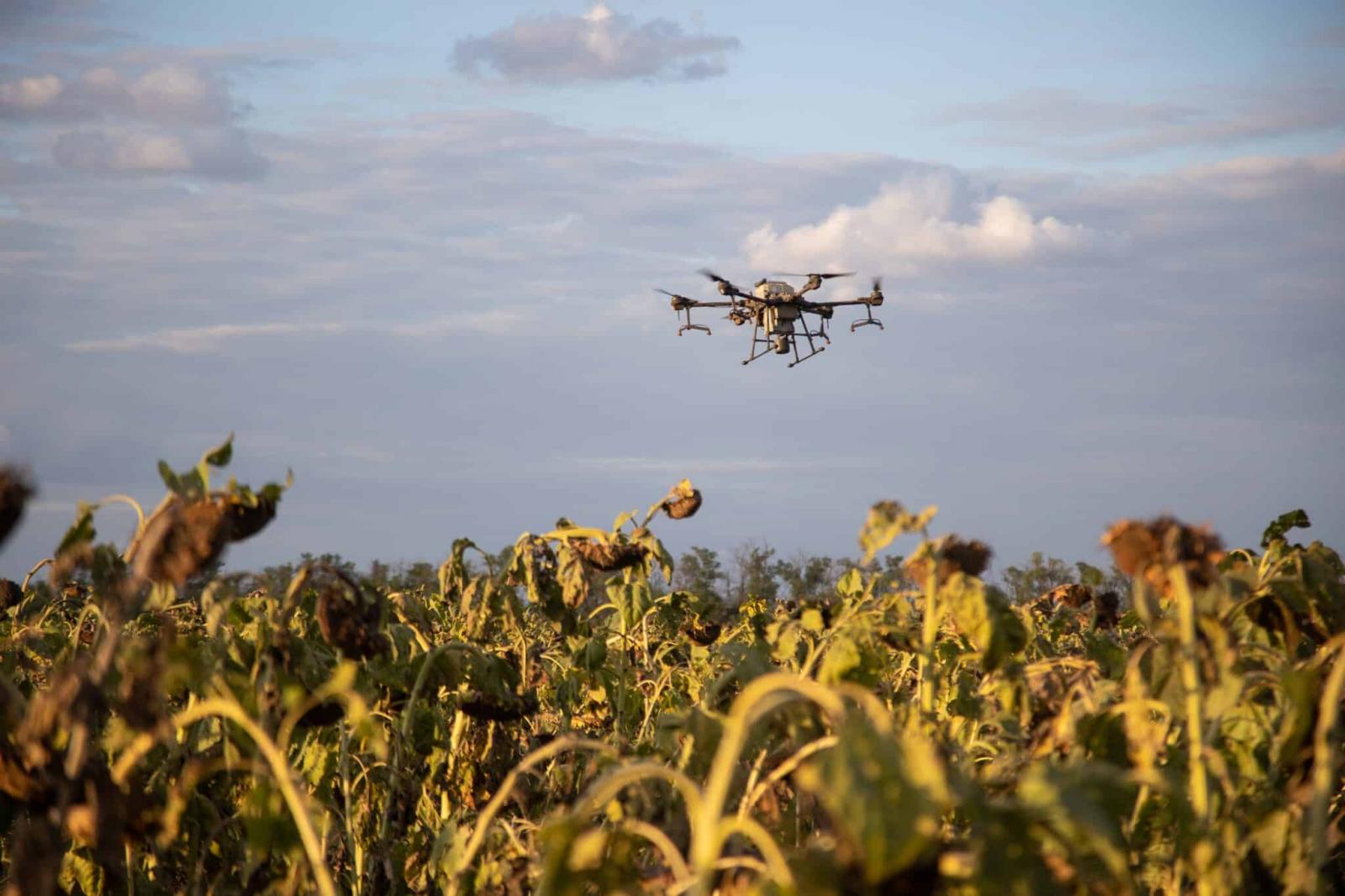|
Drone technology delivering unique opportunities for agriculture - Drones bring precise solution to tricky sunflower desiccation USA
Drones are increasingly taking to the air over agricultural lands, applying products and seeds to the land. Last summer, their precision and efficiency proved invaluable when a Nuseed sunflower trial plot situated within a farmer’s field required desiccant application. The positive results have inspired the farmer to consider the use of drones in the future. Jeremy Herr, Co-owner of Herr Farms, grows wheat, corn, soybeans and sunflowers in South-Central North Dakota with his brother. Herr brought in a drone applicator company to apply desiccant to a 10-acre Nuseed sunflower trial plot. While Herr hasn’t historically needed to desiccate sunflowers in the fall, it’s becoming more common due to blackbird pressure and disease risk from moisture. Herr would usually turn to an airplane for aerial application, but this plot required precision that couldn’t be achieved that way. “There was a Nuseed trial plot in the middle of some longer season sunflowers, so we couldn’t spray the entire field,” Herr explains. “They wanted to get the plot off sooner than later because of blackbird pressure.” Having many different varieties in the plot meant that some were past ready for harvest, and others nowhere near, so desiccating ensured they could all be harvested at the same time. “With land based rigs there would probably be compaction in the field, and you’d lose some stands from hitting sunflowers and knocking them over,” explains Herr. “With an airplane you could hit all of the crop, but there are overhead powerlines on this field and you wouldn’t be able to get around those like you can with a drone.” By utilizing a drone, they were able to stay away from all the other sunflowers in the quarter-section field, and the plot was harvested 38 days before the rest of the field came off. “I wasn’t able to get into the rest of the field because moisture came 5-10 days after we desiccated that,” says Herr. “Desiccating with a drone in this case was perfect, and we’ll probably do more of it in the future.” The application in this case took about an hour for the 10-acre plot. Aerial Advantage “Not very many people know the advantages of drones yet,” says Schutter. “But as I talk to them, it becomes apparent very quickly that there’s a benefit to using them. It’s essentially taking the place of airplanes and helicopters, and whenever it’s wet, a ground sprayer.” He explains a key advantage of a drone over an airplane or helicopter is its precision. The drone pushes the product down into the canopy. It can also get closer to the field ends without spraying the ditches or getting product on another person’s field. “You’re saving product and you get better application, which in turn increases crop yields,” Schutter adds. Another application for drones with row crops is to plant cover crops before fall harvest. This is advantageous because there is no damage to the current crop. “It allows the seed to get growing faster to hold the soil better, preventing soil erosion,”says Schutter. He notes that this works best with taller crops to avoid the cover crop getting cut as well when the fall crop is harvested. Finding Their Fit “There could be capacity issues both in terms of battery and in terms of coverage,” says Herr. “To cover the number of acres that we would need to cover in a day, we would need Battery life is a consideration, as is capacity for product. In Herr’s case, they applied the product at the aerial rate of three gallons per acre, which is significantly lower than the typical 12-15 gallons that a ground-rig would apply for desiccation. It worked well, but in some cases, they need to get up to the higher rates, and the drones might need to refill frequently. Schutter uses a DJI T40 drone, which can cover up to 45 acres per hour. He has four batteries per drone, allowing for charge and cool down time. The turn around time when it “It lands, you change the battery, fill it up, and by the time you are done filling it up, it’s reconnected with the GPS and it can go again,” Schutter explains. Cost needs to be factored in, of course. This past year, Schutter estimated that for operation only in his region, a ground sprayer would cost about $8-10 per acre, and airplane $12-13 and a helicopter $30-40. Drones came in around $15-18. However, considering the maneuverability and the level of application precision drones offer, they likely provide good return on investment in the right conditions. Farmers are witnessing the tangible benefits of incorporating drones into their agricultural practices and are increasingly willing to call upon them to provide solutions for more effective and efficient farming.
More solutions from: Nuseed USA Inc. Website: https://nuseed.com/us/ Published: August 30, 2024 |


